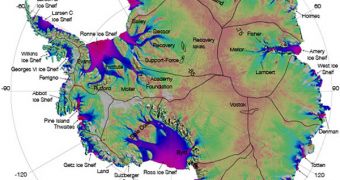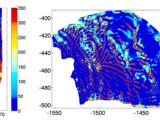Scientists at the Princeton University working together with colleagues at the British Antarctic Survey (BAS) announce the discovery of tiger stripe-like formations of rock and dirt under Antarctic glaciers. These areas of increased friction are slowing down the advance of the massive ice fields, buying us more time to address issues related to climate change and global warming.
The team says that more work needs to be conducted on these narrow stripes of material, especially on how they develop and how they disappear or erode under the action of relentless glaciers.
The new findings could help refine existing climate models that scientists use to make predictions about the evolution of Earth's climate. Details of the research were published in the latest online issue of the top journal Science.
According to the Princeton team, the beds of rocks and sediments that lie under the massive Antarctic glaciers have long since been eroded to a smooth surface, enabling ice to travel very fast above great, hidden plains. The high-friction ridges are the only things slowing it down.
The research group was able to identify these hidden features of the Antarctic continent through the use of mathematical modeling. Their effort relied heavily on data collected by BAS and the US National Snow and Ice Data Center (NSIDC).
“The ribs may play an important role in buffering the effects of a warming climate, since they slow the movement of ice that reaches the ocean and contributes to sea-level rise. These changes can happen independently of climate change, too,” explains Olga Sergienko.
She is an associate research scientist with the Princeton’ Program in Atmospheric and Oceanic Sciences, and led the new research alongside BAS scientist Richard Hindmarsh. Their research focused on the Pine Island Glacier and the Thwaites Glacier, both in the West Antarctic Ice Sheet (WAIS).
“Our guess is that these ribs are related to typical landforms that exist in the formerly glaciated areas of North America and Europe. A great example are the drumlins – raised areas of soil and rock – that make the hills in Seattle or Glasgow,” Hindmarsh adds.
The new work also made scientists curious as to how and why the high-friction tiger stripes under Antarctic ices developed. Additional studies are needed to understand the types of rock and dust that comprise these “speed bumps.”

 14 DAY TRIAL //
14 DAY TRIAL // 
